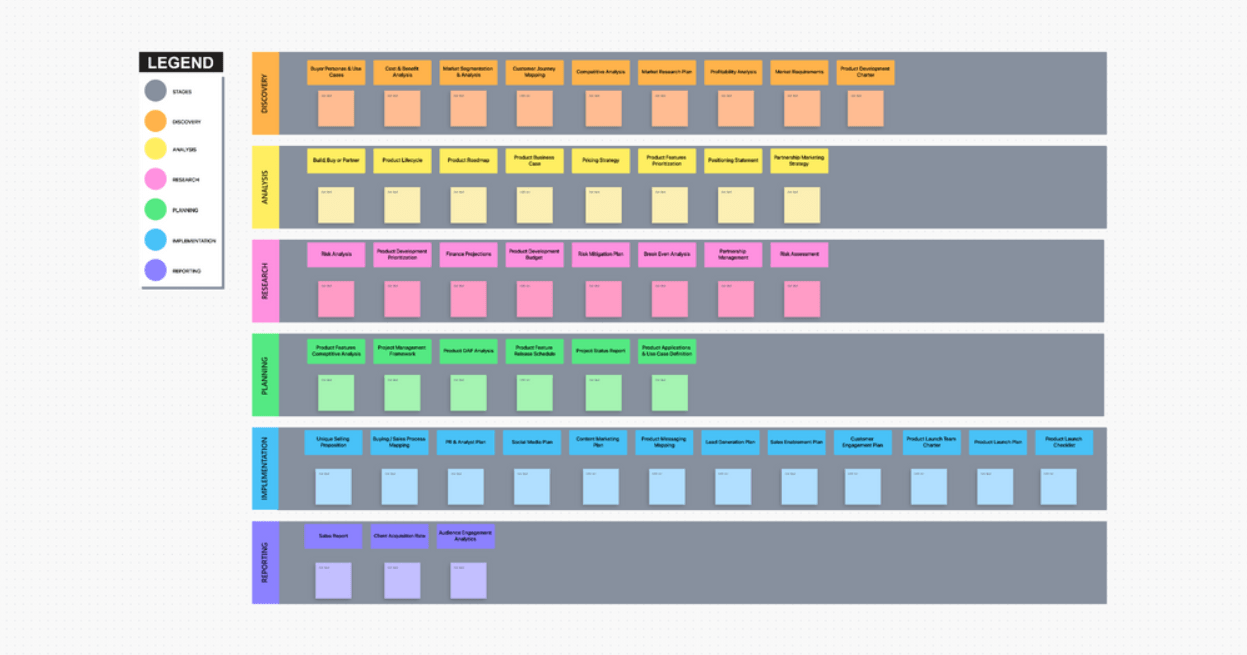

Careful research and planning are the cornerstones of any successful marketing strategy.
If you don’t plan your marketing initiatives, there’s every chance your marketing charter will go off course. As a result, you’ll waste time, money, and precious resources on activities that won’t help you achieve your marketing goals.
That’s where a robust marketing project plan will help. It helps marketing professionals map out their marketing strategy for the year, quarter, month, etc.
You can include factors like budget, resource allocation, sub-division of tasks, and the end objective.
If you need help preparing a marketing project plan, this guide is just what you require. In this comprehensive guide, we will explain what a marketing project plan is, why it’s beneficial, and how to make one.
Let’s get started.
- What is a Marketing Project Plan?
- Essential Elements of a Marketing Project Plan
- How to Create an Effective Marketing Project Plan
- The Role of Marketing Project Manager in Crafting a Plan
- Benefits of Having a Strong Marketing Project Plan
- Common Challenges in Making a Marketing Project Plan
- Ready to Create a Solid Marketing Project Plan?
What is a Marketing Project Plan?
A marketing project plan details a company’s marketing strategies and execution steps. It comprises clear timelines for executing the strategy, a list of tasks to be accomplished, the marketing goals, and other essential details about the company’s marketing initiatives.
The purpose of having a marketing project plan is to organize tasks and streamline marketing processes to get the best results.
Essential Elements of a Marketing Project Plan
Make your marketing project plan as comprehensive and well-researched as possible. This will help you during the execution stage when you need to find some information.
While there are many factors that one should include, here are some essential elements you must add to your marketing project plan.
Marketing goals
This section will mention your company’s current position and what it wants to achieve next year.
Here, you’ll list all your marketing goals for the period and the metrics you’ll use to track the performance of your campaigns. Make sure your marketing objective aligns with your overall business objectives.
Some examples of broad business and marketing objectives are
- Raising brand awareness
- Generating more sales leads
- Improving website rankings
- Growing social media presence
Based on these broad objectives, you need to develop specific goals that help achieve these. Use the ClickUp Smart Goals Template to define and document your marketing goals.

Target audience
A description of your target customer segments and their buyer personas will make up this part of your marketing plan.
Include all the critical insights from your customer research data in this section of the marketing project plan. Add as many details as possible to ensure your team knows who they’re targeting through various marketing initiatives.
Competitor analysis
Here, include a list of key competitors and insights from competitor analysis data. It should help you get a quick overview of your competitor’s marketing strategies and their strengths and weaknesses. Use the ClickUp Market Competitive Analysis Template to create a visual competitor benchmarking dashboard.

Marketing tactics
This section of your marketing plan will include a detailed list of the marketing strategies you plan to execute. Go in-depth and make a detailed plan of all the marketing initiatives you want to implement in the next year.
For example, if you plan to grow your social media presence, list all marketing strategies you will use. This could be organic content posting, paid advertising, influencer marketing, and more.
Also, list the types of content you want to focus on. Videos, for example, are gaining much traction and should be a part of your content mix.
Marketing channels
List all the marketing and content distribution channels you will use for your marketing campaign. Don’t just rely on your website or blog.
Instead, ensure you have a good mix of channels to reach a larger audience and generate more leads for your business.
You should, for example, use at least one social media marketing channel. Choose the one that’s most popular among your target audience.
However, don’t go overboard and try to put too much on your plate. Choose a few strategic channels and target them well instead of trying to market on all possible channels and failing.
Go-to-market strategy
You will need a go-to-market strategy to promote a new product or collection or enter a new market. This includes your marketing plans for five key aspects—product, price, promotion, people, and place.
Many ready-to-use go-to-market strategy templates can help you create a detailed marketing strategy. Here’s a screenshot of the ClickUp Go-to-Market Strategy Whiteboard Template, which is perfect for this.
Budget
Use this portion of your marketing project plan to set an overall marketing budget. Also, allocate a part of your overall budget to the various marketing activities and strategies you have in the works.
Do market research to estimate the costs you will likely incur on multiple marketing activities to make a realistic and accurate budget plan.
Software and tools
You will need various marketing tools and software to implement your marketing strategy successfully. This includes marketing planning software, social media management tools, content scheduling tools, and more.
We also advise using the best marketing project management software to ensure seamless team collaboration and efficient task management.
List all the tools you have and plan to buy in the next year. If there are recurring costs, such as a subscription fee, then list those as well.
How to Create an Effective Marketing Project Plan
You now understand what a marketing project plan is and what elements it contains. Now, let’s discuss how you can create a marketing project plan that works for you and helps you run successful marketing campaigns.
Here’s a step-by-step guide. Follow the process to develop a solid project marketing plan.
1. Assess your current position
Determining your company’s current situation is the first step toward making any business plan. This will help you identify areas of improvement and set clear goals.
Start with a SWOT (strengths, weaknesses, opportunities, and threats) analysis for that. Take it further and write a possible action plan for each item on your SWOT matrix. See the example below to get an idea.
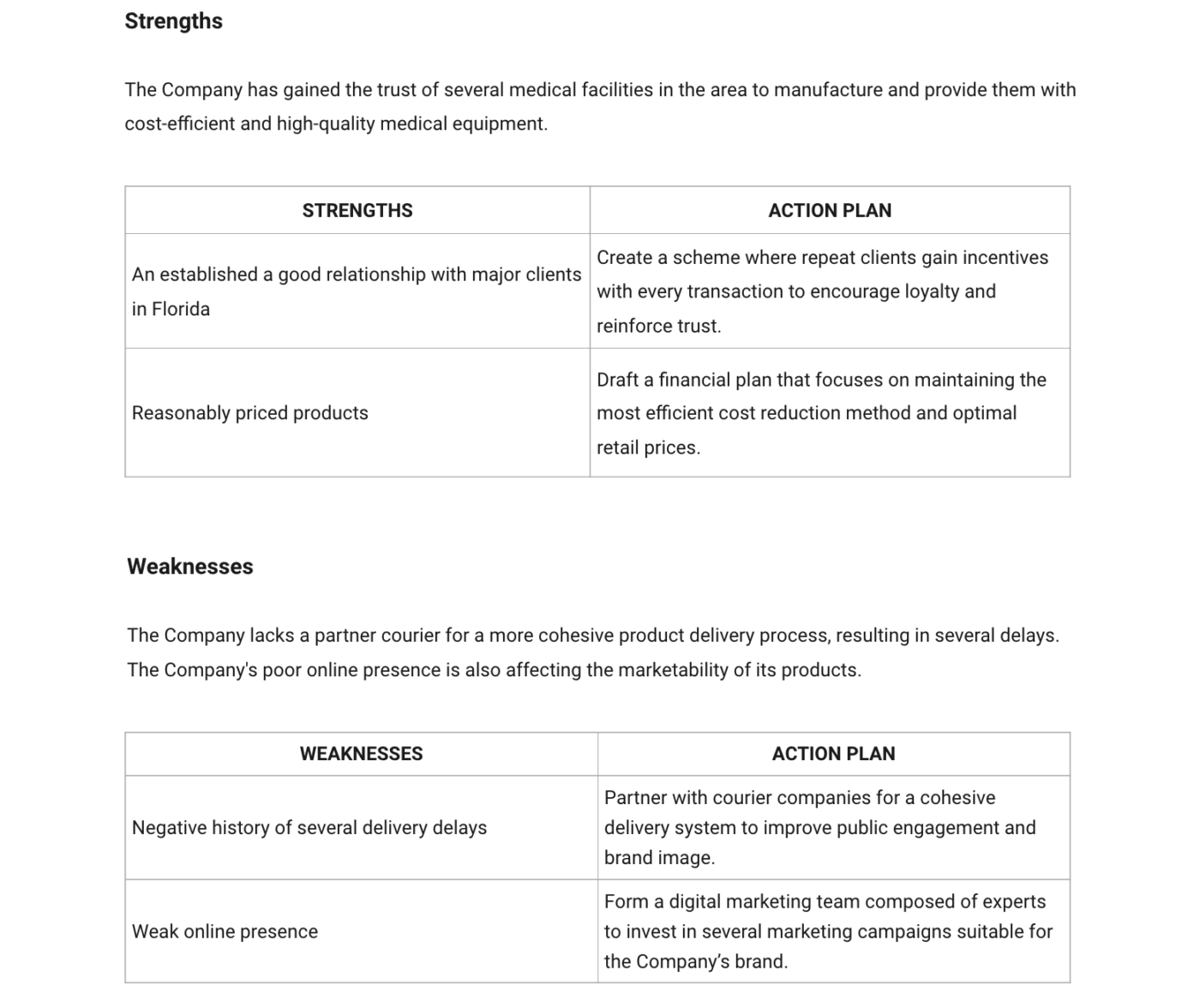
You should also conduct a competitor analysis to understand where you stand compared to your key competitors.
Once you have a clear idea of where you stand, move to the next step.
2. Clearly define your target audience
You need to identify and define your target customer segments at this stage.
Why?
Because your marketing strategies and project marketing plan will depend on your audience and their interests and preferences.
Create buyer personas for your target customer segments. It should include:
- Demographic information: Age, location, job role, income, etc.
- Goals and pain points: What is the key challenge your product helps solve? What goals can you help them achieve via your products or services?
- Interests and preferences: Which marketing channels are they most active on? What types of content do they engage with?
- Behavioral traits: What is their online shopping behavior? What is their typical buying journey?
Use the ClickUp User Persona Whiteboard Template to visualize your buyer personas and bring them to life. Include characteristics relevant to your niche and enrich each buyer persona with as much information as you can collect. Using the ClickUp User Persona Template, create and manage several user personas from a single dashboard.

3. Set clear marketing goals
Next, you need to define your marketing goals clearly. What is it that you want to achieve with your marketing efforts?
Both your marketing plan and goals should be for a specific period. Ideally, this should be a fiscal year.
Tracking your marketing performance yearly will help keep things organized. It’s also a long enough period for you to track and measure the results of your marketing activities.
Make your goals as specific and realistic as possible. Use the SMART framework to make your goals:
- Specific: Don’t be vague; set clear targets. For example, ‘drive revenue growth by 5% in the next quarter’
- Measurable: Identify metrics you can use to measure performance on said goals
- Attainable: Set realistic targets that can be achieved within the given time frame
- Relevant: Set goals that are relevant to your business
- Time-bound: All goals should have clear timelines
Once you have identified your goals, use good marketing project management software like ClickUp to document your goals.
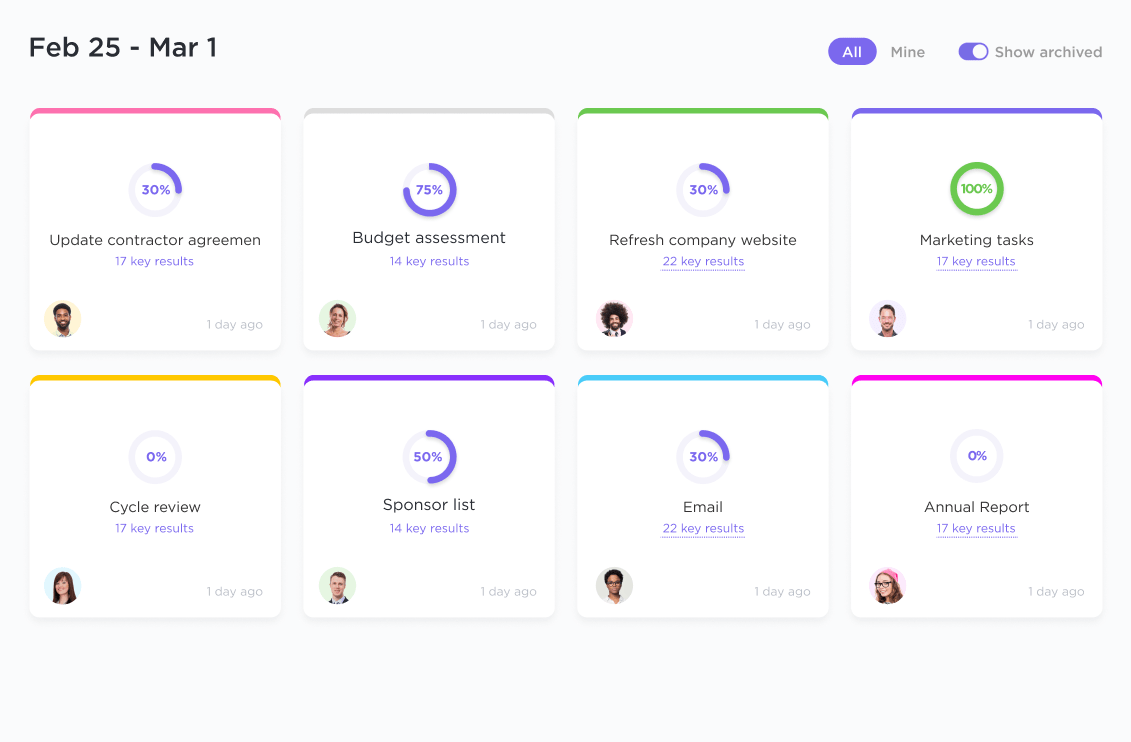
Invest in the required analytical tools to measure your marketing campaign’s performance.
4. Set a budget
By now, you should clearly know what you want to achieve and who your target audience is. Now, it’s time to set aside a dedicated marketing budget to help you achieve your goals and create a solid marketing project plan.
How much of your budget should you allocate for marketing?

This is an excellent place to start, but there is no strict rule on how much you spend. It depends on how aggressive your growth plans and marketing goals are.
If your company is in the initial growth stage, you may want to spend more on marketing. If you have an established business, your marketing budget could be lower.
It also depends on how much money you want to spend. As such, you should assess your financial position and marketing goals to set a realistic budget.
5. Choose the right marketing strategies and channels
At this step of the marketing planning process, you have everything you need to create your marketing plan and decide which strategies and channels you will use.
Some popular marketing tactics include:
- Content marketing
- Email marketing
- Social media marketing
- Search Engine Optimization (SEO)
- Webinars and podcasts
- Video Marketing
Keep your budget in mind when choosing marketing strategies. For example, advertising is a good way to drive quick results, but you may not have the budget to allocate.
As for marketing channels, your website will be your primary channel for content and SEO, but you should also include other channels in the mix. Choose 1-2 social media platforms where your target audience is most active and focus on those.
6. Assign tasks and create a schedule
This is where all your work so far comes to fruition, and you start executing your marketing strategies. Use the ClickUp Marketing Plan Template to create and allocate tasks and a marketing calendar.

Whether you’re working with an in-house team or outsourcing content creation, provide detailed creative briefs to your team. This will ensure all your marketing content is consistent, on-brand, and meets your requirements. If you need help with content creation, use the ClickUp AI to get an AI-powered writing assistant. It will help you create and edit content quickly and efficiently.
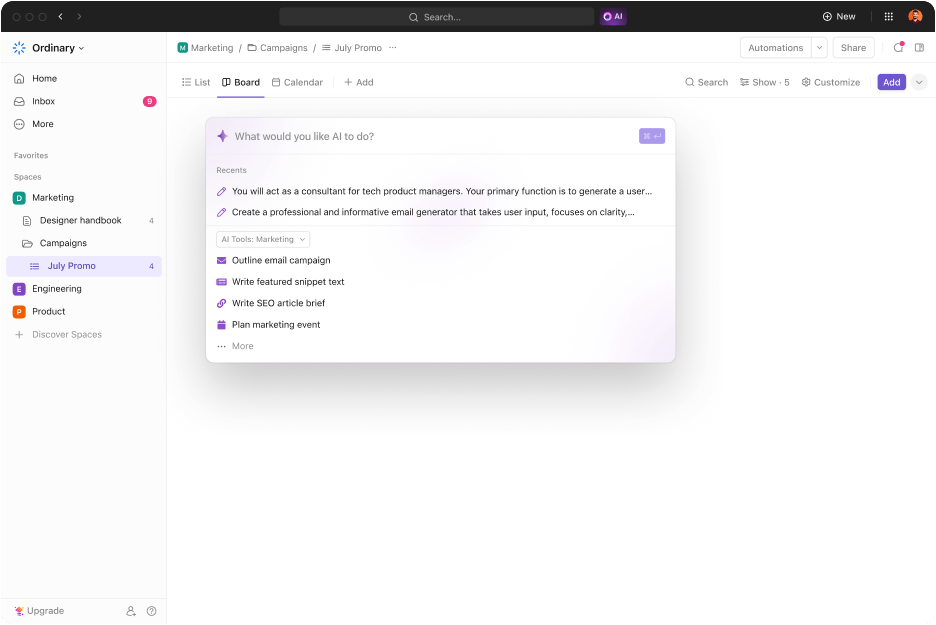
You should also use ClickUp to manage your marketing projects, as it’s a great project management tool. Use it to create a project plan, track the progress of each task, and meet deadlines. It allows you to view tasks in the Gantt chart view, a great way to visualize your project timelines and status.
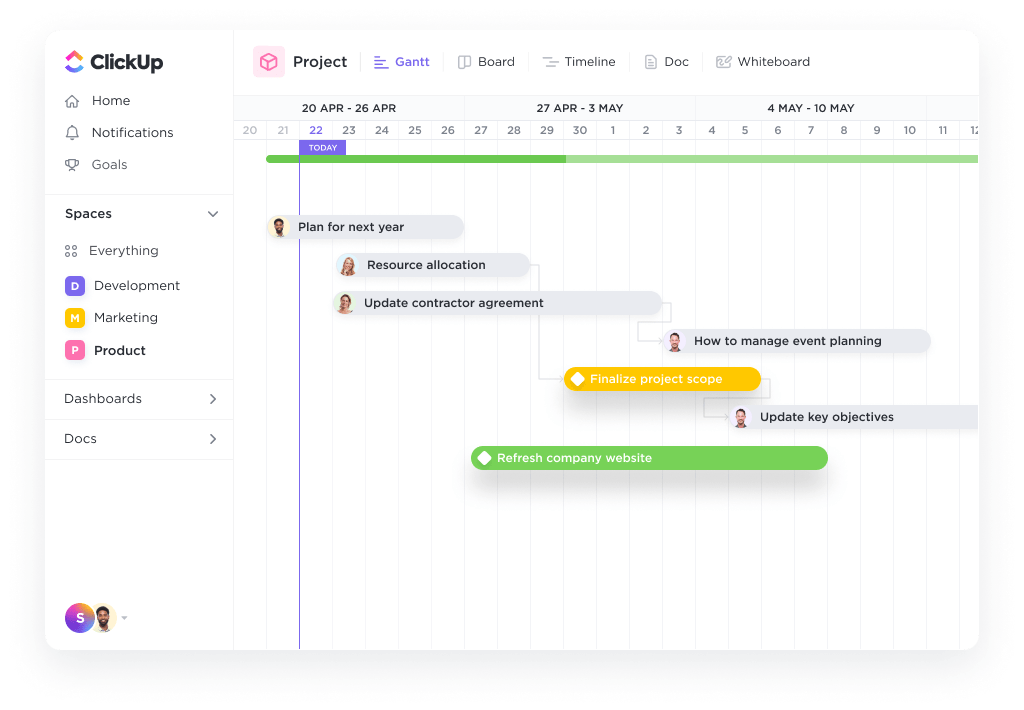
ClickUp Docs can also help you create visual workflows, create docs for sharing your project plans, collaborate with your team on various tasks, and more.
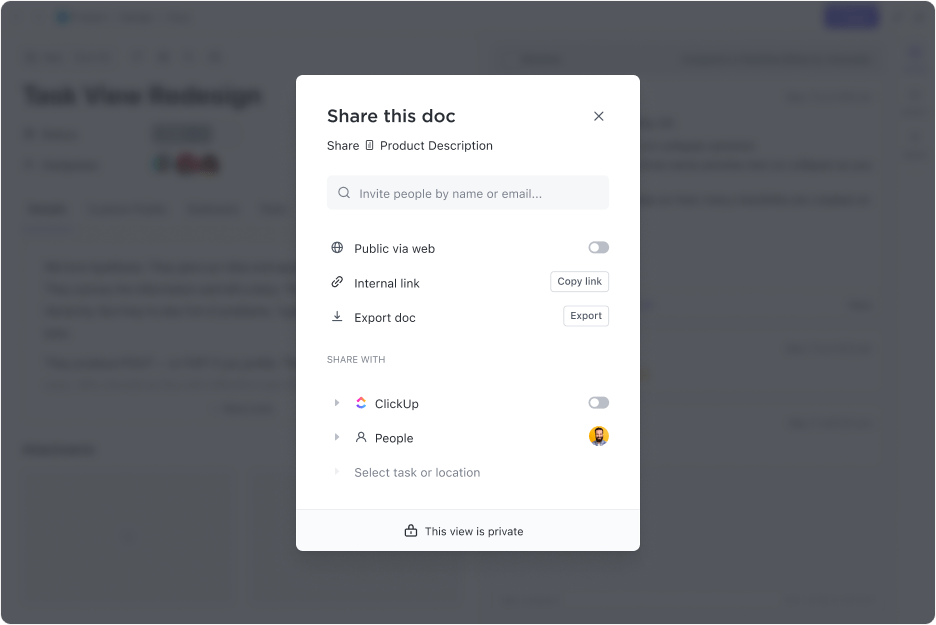
It’s one of the best project management tools and can simplify marketing project management.
The Role of Marketing Project Manager in Crafting a Plan
A marketing project manager plays a crucial role in creating and executing a marketing plan.
They are in charge of the initiative and are responsible for planning, designing, managing, and implementing it. They provide critical input and use the right marketing project management strategies to ensure that the company’s marketing initiatives are successful.
Marketing project managers are also responsible for allocating tasks and working with various marketing team members to ensure things are done correctly and on time. This requires them to be great communicators and leaders.
Benefits of Having a Strong Marketing Project Plan
A well-researched and in-depth marketing project plan can help you better organize your marketing activities. But if you need more convincing on creating a plan, check out its various benefits.
Here are some key benefits:
- A plan gives everyone involved a strategic direction and plan of action. This helps you and your team stay on the right course to achieve your marketing goals
- It helps streamline the marketing processes and keep track of and manage the various tasks involved
- It gives you a better understanding of your target customers, competitors, and target market, allowing you to be better equipped to handle any unexpected challenges
- As you mention your goals and KPIs in a marketing plan, it also helps you assess if your marketing initiatives are working well or if you need to change your approach
Common Challenges in Making a Marketing Project Plan
Making a robust marketing project plan is crucial for success, but it isn’t easy. It requires careful planning, research, and brainstorming.
By learning about the potential challenges you may face, you will be better prepared when preparing a plan for your business.
Here are some challenges you may face when creating a marketing project plan:
- You may not know where to start and what to include in your marketing project plan. Using a marketing project plan template, however, can help with that
- Setting realistic goals is another area where managers struggle. It also requires a thorough analysis of your current business positioning and overall business objectives
- Conducting thorough competitor and market analysis is also a challenging part of making a marketing plan, one that takes a lot of time and effort
Planning will be more difficult if you’re a marketer without project management experience. Get help from experts, read more about how to do it right, and use project planning tips from various online resources to prepare yourself for the challenge.
Ready to Create a Solid Marketing Project Plan?
If you’ve carefully read this article, you have all the information you need to create a winning marketing project plan.
Remember, it’s a challenging and time-consuming process, especially if you don’t have a marketing plan template or framework you use every year.
Don’t worry; we’ve got the perfect solution for you. Use ClickUp’s marketing plan templates to make your job easier. ClickUp also offers various project management tools, templates, and features to help you plan and execute your marketing strategies.
Check out the ClickUp marketing project management software and explore its features to see if it fits your business correctly.




